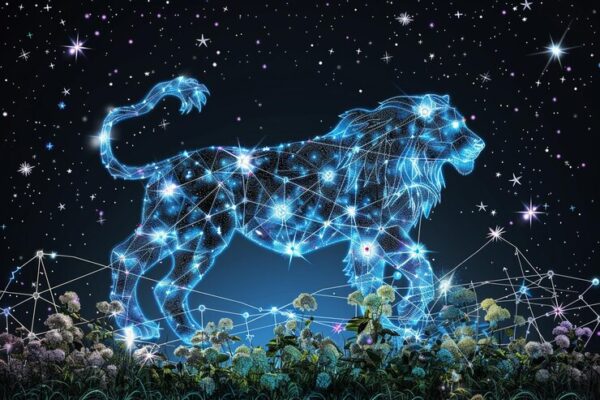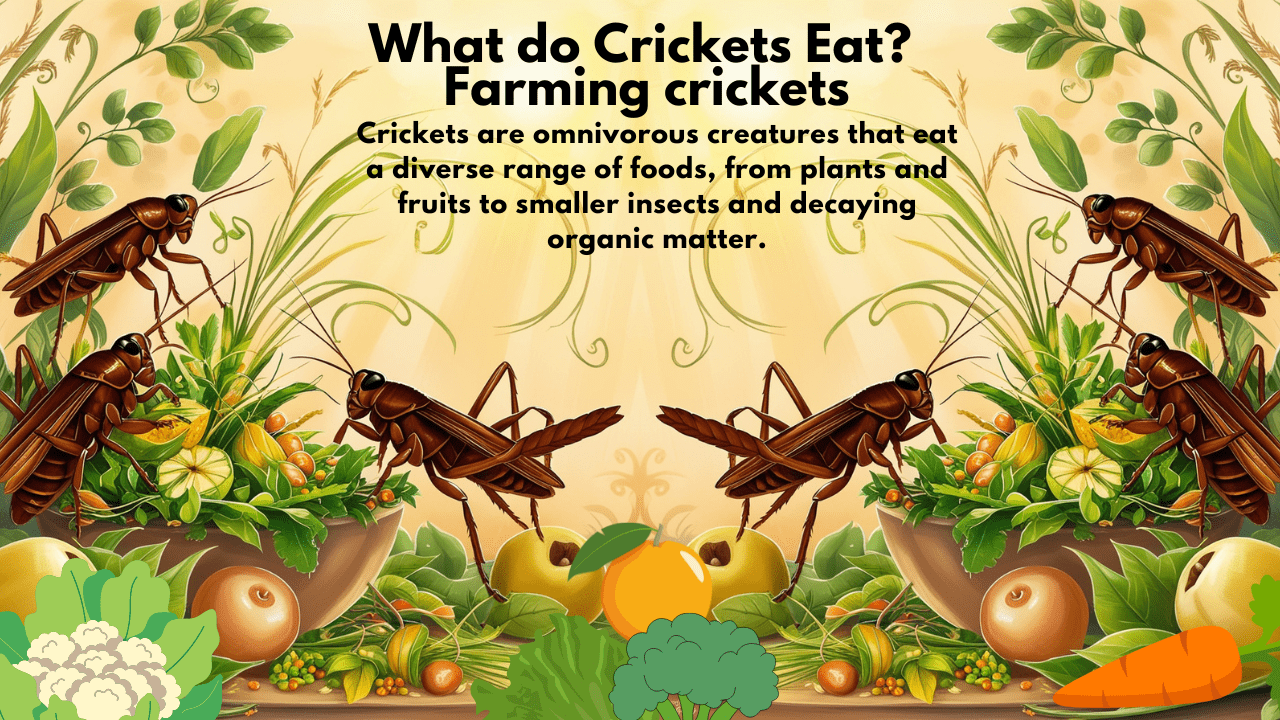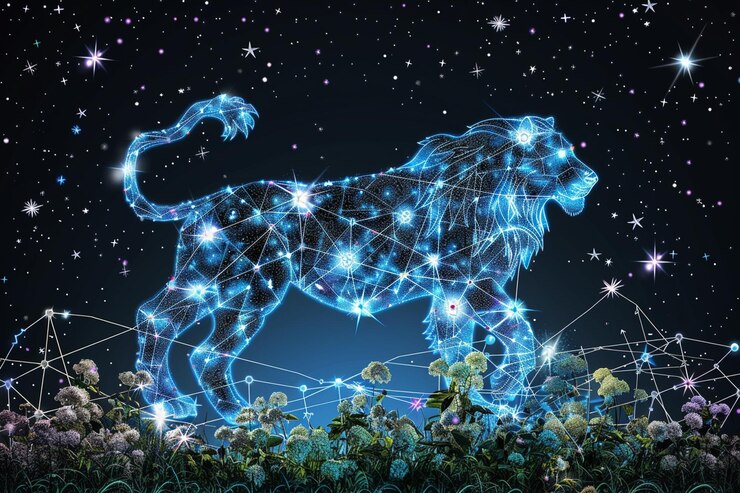Crickets, small chirping insects commonly associated with warm summer nights, have been fascinating creatures in many cultures. They’re well-known for their distinctive sounds, which are actually the males calling out to attract mates. But beyond their familiar chirping, one question people often ask is: What do crickets eat? The diet of a cricket is essential for its survival, growth, and reproduction, and crickets exhibit an omnivorous feeding behavior. In this article, we’ll dive into the details of cricket diets, what they consume in the wild, what they eat in captivity, and how their eating habits impact both ecosystems and human activities.
Crickets and Their Dietary Habits
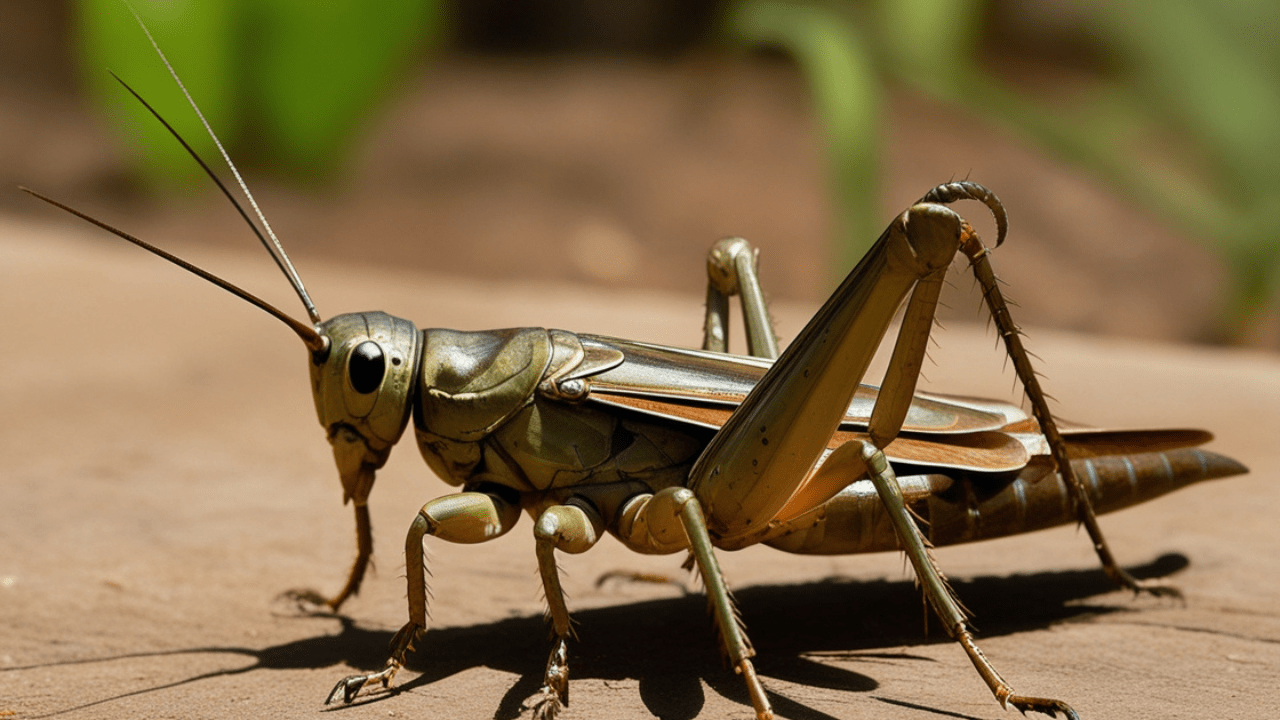
Crickets belong to the insect family Gryllidae and include over 900 species worldwide. Most crickets are omnivorous, meaning their diet consists of a mix of plant material and animal matter. In the wild, crickets consume a variety of food depending on availability, while in captivity, their diet can be more controlled. Crickets are highly adaptable feeders, making them resilient in diverse environments.
Crickets in the Wild: What Do They Eat Naturally?
In their natural habitat, crickets are opportunistic feeders, meaning they eat what’s available to them. Their diet can include:
Plant Material:
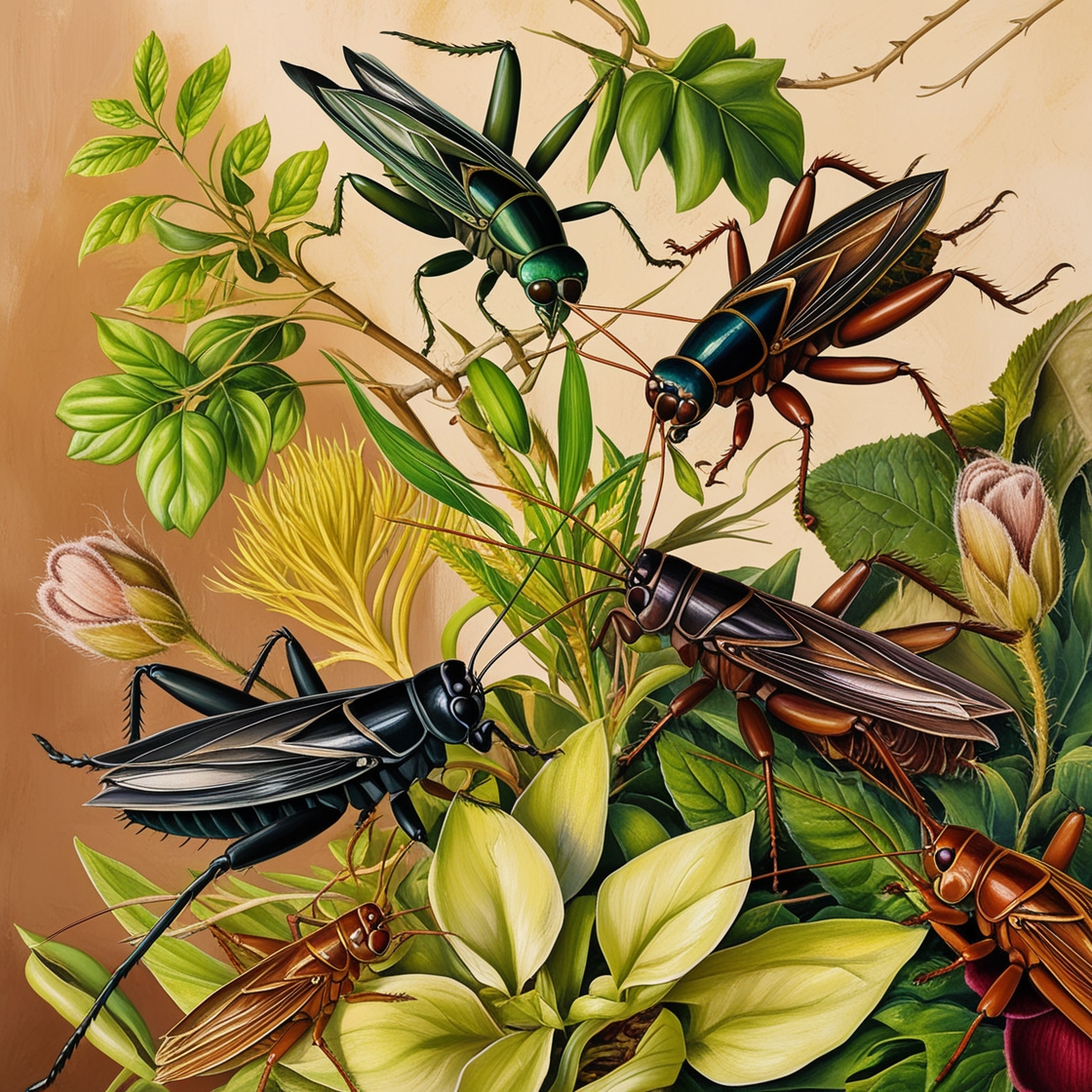
Crickets commonly consume leaves, stems, grasses, and fruits. During warmer months, when vegetation is plentiful, these form a significant part of their diet.
Fungi and Decaying Matter:
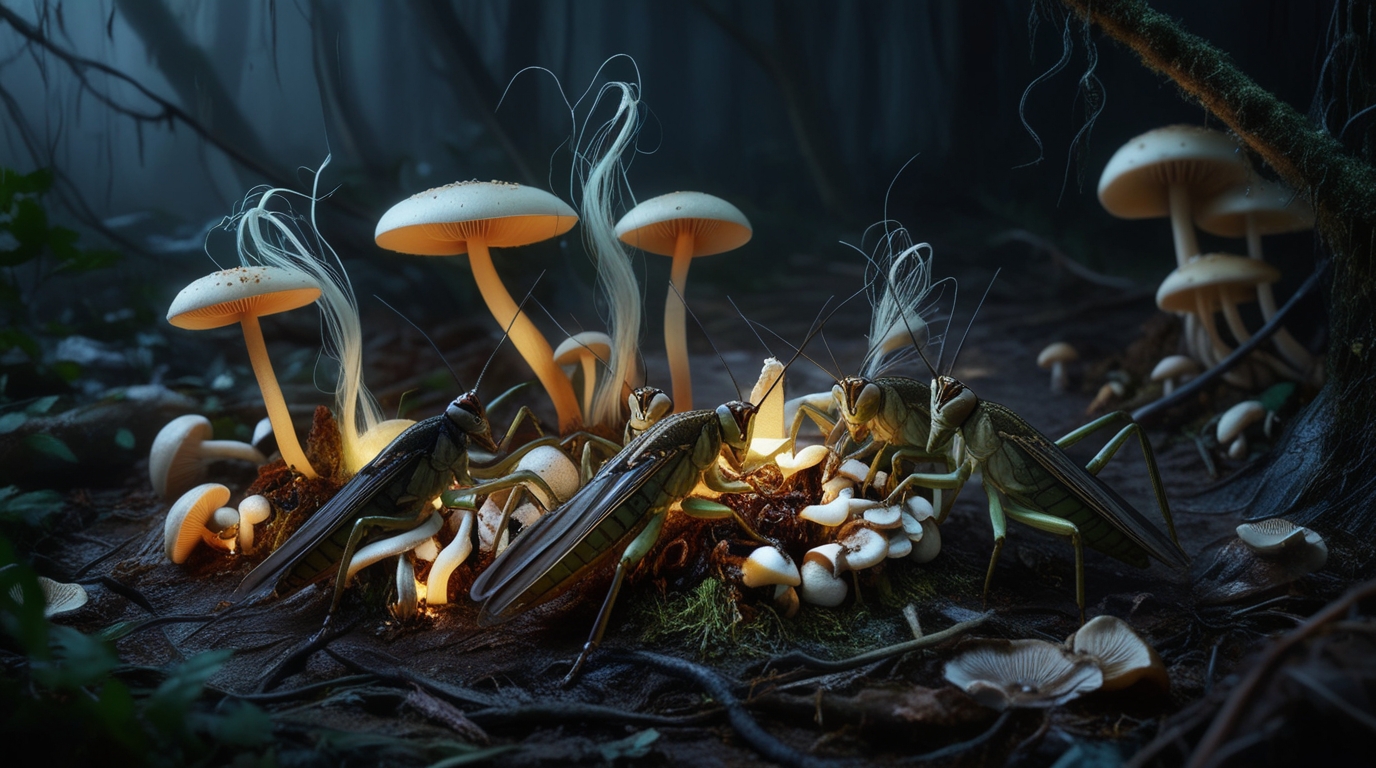
Crickets play an important role in the ecosystem as decomposers. They feed on decaying plant material and fungi, helping to break down organic matter in the environment.
Small Insects and Invertebrates:
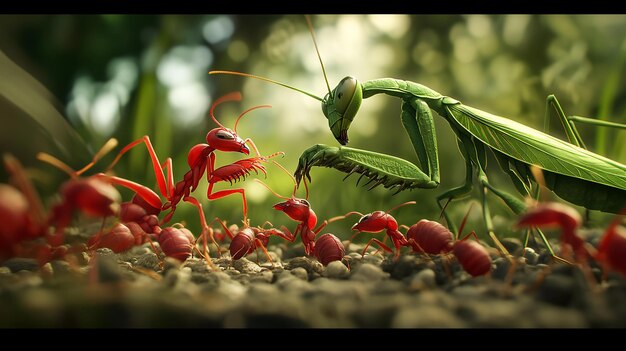
As omnivores, crickets will also eat other smaller insects, larvae, or eggs when food is scarce or when extra protein is needed.
Animal Remains:
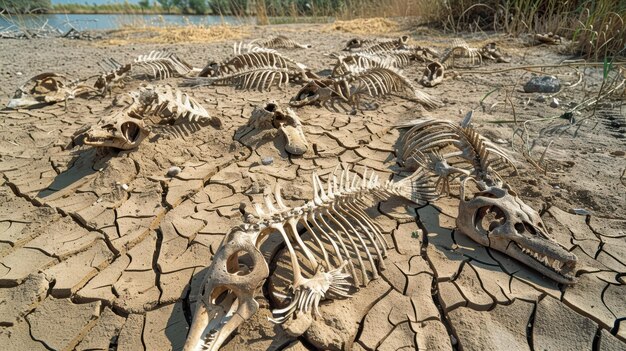
Crickets may scavenge on dead animals or other organic matter, contributing to the ecosystem’s recycling process.
Crickets adjust their diet based on the seasons and what is available in their environment. This ability to eat a wide range of food sources helps them survive in different habitats, from dense forests to urban areas.
Crickets as Omnivores
As omnivores, crickets possess a highly flexible diet that enables them to adapt to different environmental conditions. Unlike herbivores, who solely consume plants, or carnivores, who only eat animal matter, crickets can ingest both. Their omnivorous nature allows them to survive on minimal resources when necessary, switching from plant-based diets to scavenging small insects or animal remains during food shortages. This flexibility is a key reason why crickets thrive in such diverse ecosystems.
What Do Crickets Eat in Captivity?
Crickets raised in captivity require a carefully balanced diet to ensure they remain healthy, especially if they are being kept as pets or as food for other animals such as reptiles. Common foods for captive crickets include:
Commercial Cricket Food:
Specially formulated cricket food is available in pet stores, designed to meet their nutritional needs. These products often contain a mixture of grains, proteins, and vegetables.
Vegetables and Fruits:
Fresh produce like carrots, apples, leafy greens, and potatoes are excellent for crickets. They provide essential nutrients and moisture.
Protein Sources:
In captivity, crickets benefit from protein-rich foods such as fish flakes, dog food, or small portions of boiled eggs.
Grains and Cereals:
Crickets also eat grains like wheat bran, oats, or ground cereals, which provide a source of energy.
A balanced diet for crickets is crucial, as it affects their overall health and the nutritional quality they provide if used as feeder insects for reptiles or birds.
The Importance of a Balanced Diet for Pet Crickets
Pet crickets, like all living creatures, require a balanced diet to thrive. A nutritious diet is especially important if you are keeping crickets as feeders for other pets like reptiles, amphibians, or birds. Well-nourished crickets provide better nutrition to the animals that eat them. A good cricket diet should consist of fresh fruits and vegetables, grains, and protein sources. Water is also essential for crickets, and it can be provided either through moisture-rich foods like vegetables or a small water dish with a sponge to prevent drowning.
How Much Do Crickets Eat?
Crickets are small insects, so they do not require large amounts of food. However, their feeding behavior depends on their age, environment, and the availability of food. Adult crickets tend to eat more than younger crickets (nymphs), and their food intake increases when they are more active or during the reproductive phase. In captivity, overfeeding can lead to waste and an unsanitary environment, so providing the right amount of food is key. On the other hand, underfeeding can lead to cannibalistic behavior, especially if protein is lacking in their diet.
What Should You Avoid Feeding Crickets?
While crickets are omnivores and can eat a variety of foods, some things should be avoided, especially in captivity:
- Toxic Plants: Some plants, such as rhubarb and certain types of ivy, are toxic to crickets.
- Moldy or Spoiled Food: Feeding crickets spoiled or moldy food can introduce harmful bacteria or toxins into their system, leading to illness or death.
- Foods High in Salt or Sugar: Foods with high salt or sugar content can be harmful to crickets, so it’s best to stick to natural, fresh food sources.
Crickets and Their Role in the Ecosystem
Crickets play a vital role in the ecosystem as both prey and predators. They are a significant food source for a wide range of animals, including birds, reptiles, small mammals, and amphibians. Their diet as decomposers also helps break down decaying plant and animal matter, contributing to nutrient recycling in soil. In this way, crickets help maintain ecological balance by controlling the population of smaller insects and by aiding in the decomposition process.
Do Crickets Eat Other Insects?
Yes, crickets do eat other insects, especially when seeking additional protein. In the wild, crickets might consume smaller insects, larvae, or even eggs. In captivity, if crickets do not receive enough protein, they can become cannibalistic and begin eating each other. To prevent this, ensure crickets have access to adequate protein sources in their diet.
Can Crickets Eat Human Leftovers?
Crickets can eat some types of human food, particularly fresh fruits and vegetables. However, care should be taken when feeding crickets leftover human food. Processed foods high in salt, sugar, or artificial additives should be avoided. Healthy scraps, such as vegetable peels, leafy greens, and fruits, can be a nutritious addition to their diet, as long as the food is fresh and free from contaminants.
What Do Baby Crickets (Nymphs) Eat?
Baby crickets, known as nymphs, have similar dietary needs to adults but require smaller, softer food. Since they are smaller in size, their food should be finely chopped or mashed to ensure they can eat it easily. Nymphs thrive on a diet of soft vegetation, ground grains, and protein sources to support their growth into adulthood. It’s important to provide nymphs with frequent, balanced meals to ensure proper development.
How Diet Impacts the Chirping and Mating Behavior of Crickets
A cricket’s diet directly affects its chirping, which is essential for attracting mates. Male crickets produce their signature chirps by rubbing their wings together to call out to potential mates. Well-fed crickets tend to chirp more loudly and frequently, as they have more energy. A cricket deprived of proper nutrition may chirp less often or produce weaker sounds, which can impact its chances of successfully mating.
Crickets as Food
Crickets are increasingly being consumed as a source of protein for humans. The diet of crickets raised for human consumption is carefully managed to ensure they are nutritious and safe to eat. Crickets fed a clean, protein-rich diet are more desirable for human consumption, as their diet affects their taste and nutritional profile. Crickets are high in protein, omega-3 fatty acids, and essential vitamins, making them a sustainable alternative to traditional meat.
Crickets in Agriculture
In agriculture, crickets can be both helpful and harmful. As decomposers, they benefit soil health by breaking down decaying plant material and organic matter. However, large populations of crickets can also become pests, feeding on crops and damaging plants. In some cases, crickets can cause significant agricultural damage, especially in fields of young crops.
Conclusion
Crickets are omnivorous creatures that eat a diverse range of foods, from plants and fruits to smaller insects and decaying organic matter. In the wild, their diet depends on what’s available, while in captivity, they require a balanced diet of fresh vegetables, fruits, protein, and grains to stay healthy. Crickets play an essential role in ecosystems, helping to decompose organic matter and serving as a food source for many animals. Their flexible diet makes them fascinating creatures, capable of thriving in varied environments and providing valuable benefits to both nature and humans.
FAQs about What Crickets Eat
Can crickets eat meat?
Yes, crickets can eat small amounts of meat or other protein-rich foods like fish flakes or other insects.
Do crickets drink water?
Yes, crickets need water and can get most of their moisture from food, but they can also drink from a small water dish or sponge.
Can crickets eat bread?
Crickets can eat bread in small quantities, but it should not make up the majority of their diet.
Do crickets eat grass?
Yes, crickets often eat grass and other plant materials in the wild.
Can crickets survive on just fruits and vegetables?
While fruits and vegetables provide essential nutrients, crickets also need protein to thrive.
Are crickets cannibals?
Crickets can become cannibalistic if they are deprived of food, especially protein, in captivity.






